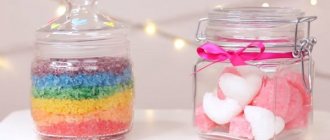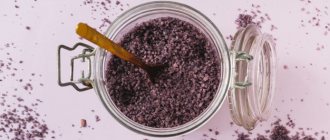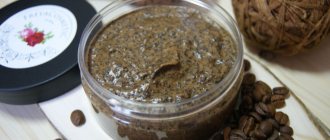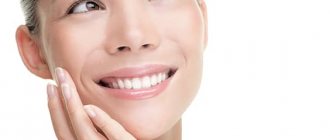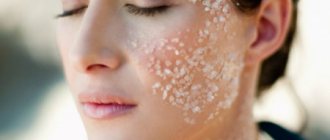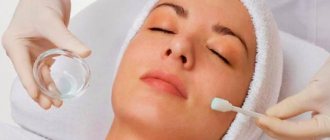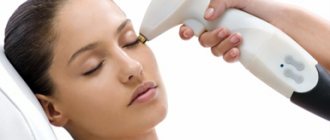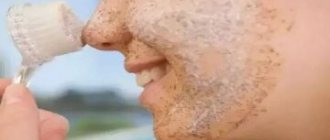Among the variety of beauty and rejuvenation procedures available today, peeling procedures have become especially popular. But such a method of chemical exfoliation as milk peeling deserves special attention.
Lactic acid is an organic fruit acid that is formed during the lactic fermentation of glucose. This is an absolutely natural and natural substance for humans, as it is an intermediate metabolic product in the metabolism of carbohydrates. Lactic acid has many functions, both in the human body and outside it. It is a natural preservative. It is thanks to lactic acid that vegetables and fruits are preserved for the winter, wine and beer, and lactic acid products are formed. From this we can conclude that this substance is absolutely safe for the body and even useful.
Lactanic (lactic) acid is part of the components of the natural moisturizing substance of the skin, maintains a slightly acidic reaction of the skin secretion, which promotes the functioning of normal and beneficial microflora.
Chemical peeling with lactic acid is superficial - that is, it exfoliates only the uppermost dead epidermal cells. It is considered one of the most non-traumatic and gentle procedures (equal to almond). Suitable for any skin type, both very sensitive, prone to dryness, and oily, acne-prone. This peeling is most suitable for young women as part of comprehensive facial skin care.
Properties of lactic acid that are used during milk peeling:
- exfoliative properties;
- pronounced moisturizing effect on the skin;
- lifting effect due to activation of the processes of skin cell division and epithelial renewal, synthesis of collagen and elastin fibers;
- reduction in sebum production, reduction in the number of comedones, acne elements and other inflammatory skin formations;
- even out skin color and lighten it;
- antiseptic and anti-inflammatory effect;
- antioxidant properties.
SPA Peel Classic | SPA peeling
Detailed description
Description :
Spa peel is a line of water-alcohol-based products intended for use as a preparatory peeling. Their composition is based on a combination of retinol, salicylic and pyruvic acids.
S – Salicylic acid Powerful keratolytic effect. Level of exposure - skin surface. Facilitates penetration of other assets.
P – Pyruvic acid Dermoplasty. Level of exposure - from the deep layers of the epidermis to the papillary layer of the dermis
A – Retinol Orthodermal action. Maintains the normal physiological state of the epidermis and has sebum-regulating properties.
Compound:
— 15% salicylic acid — 8% pyruvic acid — 5% lactic acid — 0.1% retinol
Application:
1. Cleanse the skin with milk and HIDRADERM toner
2. Degrease the skin with DEGREASING SOLUTION
3. Apply SILKSES Moisturizing Protector to the corners of the eyes, lips, nose
4. Apply peeling from 1 to 5 layers with an interval of 3 minutes. depending on phototype, skin sensitivity and selected peeling depth. During the first procedure, do not apply more than 2 layers.
With phototypes I, II, III, patients' skin is more resistant to peeling, so the number of layers can be increased.
Do not apply more than 5 layers! SPA LIGHTENING PEEL can be applied directly to spots
5. Apply HIDRALOE GEL PROFESSIONAL
6. Protect your skin with SCREENSES CREAM SPF 50 tinted sunscreen
Carry out the procedure once every 2 - 3 weeks. Recommended course - from 3 to 6 procedures
THE EFFECT OF PEELING IS BASED ON THE SYNERGIC ACTION OF ITS ACTIVE COMPONENTS:
— Salicylic acid: powerful keratolytic, comedolytic, anti-inflammatory and sebostatic effect, promotes the penetration of other active ingredients
— Pyruvic acid (level of action: medium-epidermal and medium-dermal): dermoplastic effect, stimulates the synthesis of collagen, elastin and glycoproteins of the dermis
— Retinol: has a pronounced exfoliating and rejuvenating effect, helps maintain the epidermis in a normal physiological state, stimulates the synthetic activity of fibroblasts to produce collagen, elastin, reticulin and GAG.
| The entire range of Mediderma (Spain) >>> |
| Cleansing and preparation |
| Chemical peels Mediderma |
| Mediderma liposomal peels |
| Additives to Mediderma peels |
| Serums Mediderma |
| Mediderma masks |
| Post-peeling Mediderma |
| Professional Mediderma |
| Mesotherapy NanoMeso Mediderma |
| Mediderma ampoule preparations |
| Mediderma apparatus |
| Mediderma fillers |
| Microneedling Nanopore Stylus |
| Mediderma shares |
| Mediderma lines (Spain) |
| Abradermol - microdermabrasion cream |
| Argipeel – peeling based on arginine |
| Azelac Peel – azelaine peels |
| Degreasing - degreasing solution |
| Dna Recovery Peel – peeling for DNA restoration |
| Ferulac Peel – peelings and preparations based on ferulic acid |
| Fillderma – biorevitalizant and fillers |
| Hidraderm - cleansing milk |
| Ioson – gels for hardware procedures |
| Lactipeel – milk peeling |
| Mandelac – almond peelings and scrub |
| Melaspeel – Jessner peels |
| Meso Cits – serums for microneedling (mesorollers) |
| NanoMeso – mesotherapy drugs |
| Natuvalia – ampoule external preparations |
| Nomelan – phenol peels |
| Nomelan Cafeico – coffee peelings |
| Pyruvic Peel – pyruvic peels |
| Retises – retinoic peels and preparations |
| 3-Retises – new retinoic peeling |
| Rosoil – restoration and healing with rose hips |
| Salipeel – salicylic peels |
| Salipeel Lic – liposomal salicylic preparations |
| Sensyses - liposomal cleansing lotion |
| Sesglicopeel – glycolic peels |
| Ses-Retinal – retinoic peeling |
| Spa Peel – combined keratolytic peeling |
| Target Nanopeel - peeling system with liposomed active ingredients |
| TCA Peel – trichloroacetic peeling |
Superficial peeling with lactic acid is indicated in the following cases:
- symptoms of skin dehydration (peeling, feeling of tightness);
- mild acne;
- cicatricial changes after acne and other causes;
- uneven complexion (areas of hyperpigmentation or hypopigmentation);
- symptoms of hyperkeratosis;
- excess sebum production;
- black dots;
- decreased elasticity and firmness of the skin;
- unhealthy complexion;
- the first signs of photoaging or premature age-related changes;
- a network of unexpressed facial wrinkles.
Contraindications:
Despite the fact that exfoliation with lactic acid is very gentle, there are conditions in which peeling is contraindicated:
- hypersensitivity or allergy to any component of the peeling composition;
- herpetic infection in the acute stage;
- the period of bearing a child and breastfeeding;
- purulent-inflammatory diseases or wounds, erosions in the area of application of the peeling composition;
- acute infectious disease;
- fever;
- hair removal procedure performed the day before, a visit to the solarium, the beach;
- diabetes mellitus in the stage of decompensation;
- severe somatic pathology;
- malignant neoplasms of any location;
- vascular network in the area of peeling application.
Benefits of milk peeling:
Exfoliation with lactic acid has a number of advantages over other similar superficial chemical peels:
- practically does not cause allergic reactions;
- safe method, does not cause discomfort or pain;
- there is no recovery period, no redness, wounds, erosions, or chemical burns are formed;
- it is possible to carry out even without pre-peeling preparation, since the procedure is very gentle and sometimes it itself is used as a preparatory manipulation;
- does not dry out the skin, does not disrupt the composition of its normal microflora;
- Suitable for both dry, normal and oily skin;
- can be performed at any time of the year, there is no photosensitizing effect;
- can be used on any part of the body, not just on the face;
- Suitable for people with dark and hypersensitive skin.
Types of sesderma peelings
Chemical peels are a series of the Mediderm line and are characterized by effectiveness, balanced composition, and precise concentration of acids according to the pH value. The official website provides detailed information about all sesderma peels.
Ferulic
Sesderma ferul peeling contains a compound with unique properties. Ferulic acid is obtained by extraction. The raw material is rice bran. The main active component, thanks to the liposome formula, penetrates deeply into the dermis and acts for a long time. Effect of the procedure:
- strengthening protective functions;
- maintaining the required amount of water in the intercellular space;
- alignment of relief and skin tone;
- lightening of pigmented areas;
- increased collagen production;
- minimal side effect.
The use of peeling with ferulac is especially indicated for women who have:
- signs of photo- and bioaging;
- acne and its consequences;
- rosacea;
- enlarged pores;
- increased fat content;
- pigmentation.
Course use includes 6 sessions, which are carried out at intervals of 1 to 3 weeks. No more than 12 procedures are allowed per year.
Almond
This type of exfoliation is based on the use of mandelic acid. The substance is obtained from the fruit of bitter almonds. Due to the large size of the molecules, mandelic acid gently cleanses and gradually penetrates the skin.
Sesderma almond peeling is recommended for:
- acne, acne, seborrhea;
- early signs of aging, manifested by dryness, low tone, a network of fine wrinkles;
- thin, sensitive skin;
- rosacea;
- post-acne;
- increased pigmentation.
Exfoliation is well tolerated, the recovery period is quick and does not require special medications.
The basis for choosing the acid concentration, quantities and frequency of sessions are individual characteristics. To achieve a long-lasting result, on average, the course involves 8 to 12 procedures with a break of 1-2 weeks.
Almond peeling is often performed to prepare the skin for deeper effects. Usually 1 to 3 sessions are enough.
Azelaic
Azelaic acid has the ability to reach the deep layers of the skin. It normalizes metabolic reactions in the follicles of the sebaceous glands and triggers the mechanism of cleansing the ducts. The action of the main peeling component is also anti-inflammatory. Under its influence, melanin production slows down, which helps treat rosacea.
The advantage of exfoliation with azelaic acid is year-round use for people with any phototype.
The procedure is recommended for the following problems:
- erythema;
- acne and its consequences;
- seborrheic dermatitis;
- rosacea;
- aging processes;
- rosacea;
- pronounced pigmentation.
The number of sessions providing a long-term effect is from 8 to 12. Breaks between procedures are from 7 to 14 days. Visible changes occur after 2-3 peels.
Lactic
The raw material for the production of lactic acid is natural milk that has undergone fermentation. The special consistency of the exfoliant (in the form of a gel) is achieved at an acidity level of pH 2.5. The substance penetrates the skin slowly and does not cause irritation.
The effect of peeling is manifested in moisturizing, smoothing wrinkles, increasing firmness and elasticity. The procedure has anti-inflammatory and keratolytic effects.
Milk peeling is indicated for aging dry skin, sallow complexion, aging caused by sunlight and age, and decreased tone.
A course (6-8 procedures with an interval of 2-3 weeks) will help ensure long-term results.
Salicylic
The multicomponent composition includes a complex of acids: salicylic, citric, linoleic.
The first component regulates the formation of fat, prevents inflammation, tightens pores, and has an antimicrobial effect.
Citric acid is responsible for creating an acidic environment, which prevents the growth and development of bacteria and gives a whitening effect.
Linoleic acid protects the skin from drying out, neutralizes free radicals, accelerates healing, and prevents the development of inflammation.
Sesderma salicylic peeling is recommended to eliminate the following problems:
- acne;
- keratosis;
- rosacea;
- psoriasis;
- seborrhea.
The result of using chemical exfoliation with salicylic acid is:
- reducing the consequences of inflammatory processes;
- smoothing the skin in areas of acne scars and post-acne;
- smoothing wrinkles;
- return of a healthy shade;
- discoloration of pigment spots resulting from the action of ultraviolet rays.
The course of salicylic exfoliation includes from 6 to 10 sessions. The procedures are carried out with an interval of 7-14 days.
